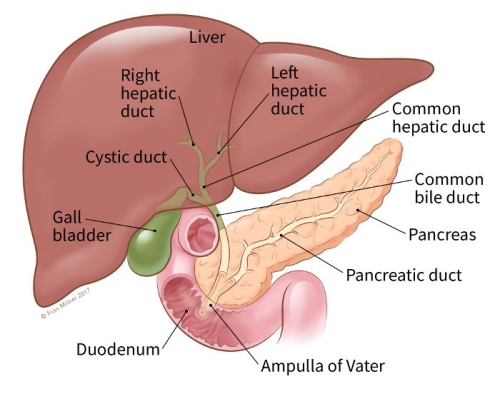
Bile duct cancer starts in a bile duct. To understand this cancer, it helps to know about the bile ducts and what they normally do.
The bile ducts are a series of thin tubes that go from the liver to the small intestine. Their major job is to move a fluid called bile from the liver and gallbladder into the small intestine, where it helps digest the fats in food.

BILE DUCT CANCERS BY LOCATION
Cancer can start in any part of the bile duct system. Based on where the cancers are, they’re grouped into 3 types:
- Intrahepatic bile duct cancers
- Perihilar (also called hilar) bile duct cancers
- Distal bile duct cancers
*Another name for bile duct cancer is cholangiocarcinoma.
Cholangiocarcinomas in these different groups cause different symptoms.
Intrahepatic bile duct cancers
These cancers start in the smaller bile duct branches inside the liver. Sometimes they’re confused with cancers that start in the liver cells, which are called hepatocellular carcinomas , which are often treated the same way.
Perihilar (also called hilar) bile duct cancers
These cancers start at the hilum, where the left and right hepatic ducts have joined and are just leaving the liver. These are also called Klatskin tumors. These cancers are grouped with distal bile duct cancers as extrahepatic bile duct cancers.
Distal bile duct cancers
These cancers are found further down the bile duct, closer to the small intestine. Like perihilar cancers, these are extrahepatic bile duct cancers because they start outside of the liver.
BENIGN BILE DUCT TUMORS
Not all bile duct tumors are cancer. Bile duct hamartomas and bile duct adenomas are examples of benign (non-cancer) tumors.
Source: American Cancer Society, What is bile duct cancer, https://www.cancer.org/cancer/bile-duct-cancer/about/what-is-bile-duct-cancer.html, July 3, 2018
